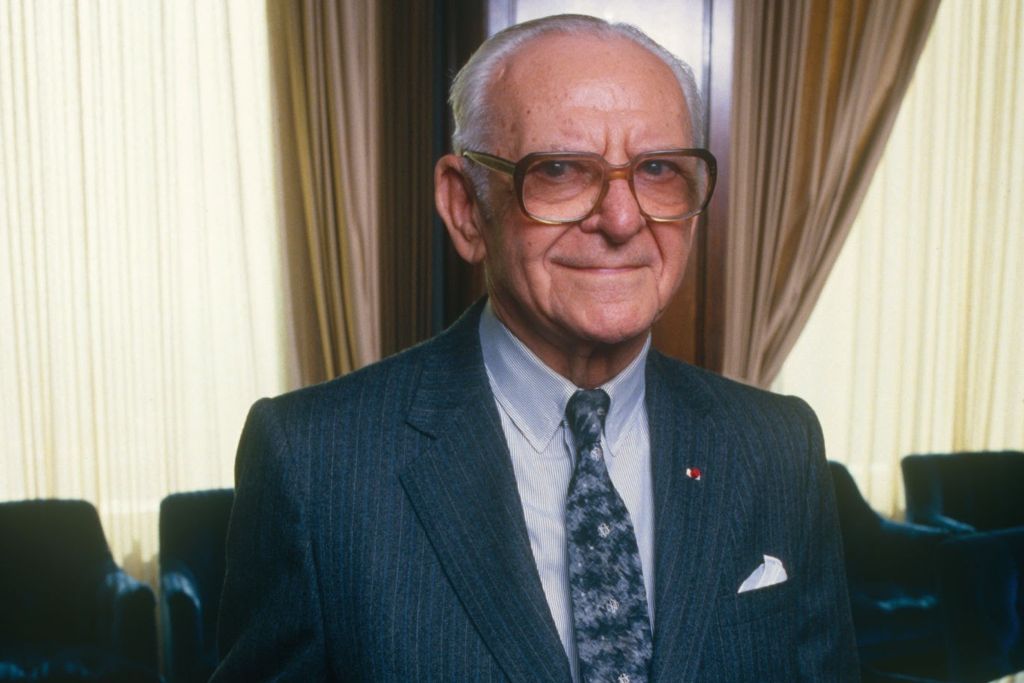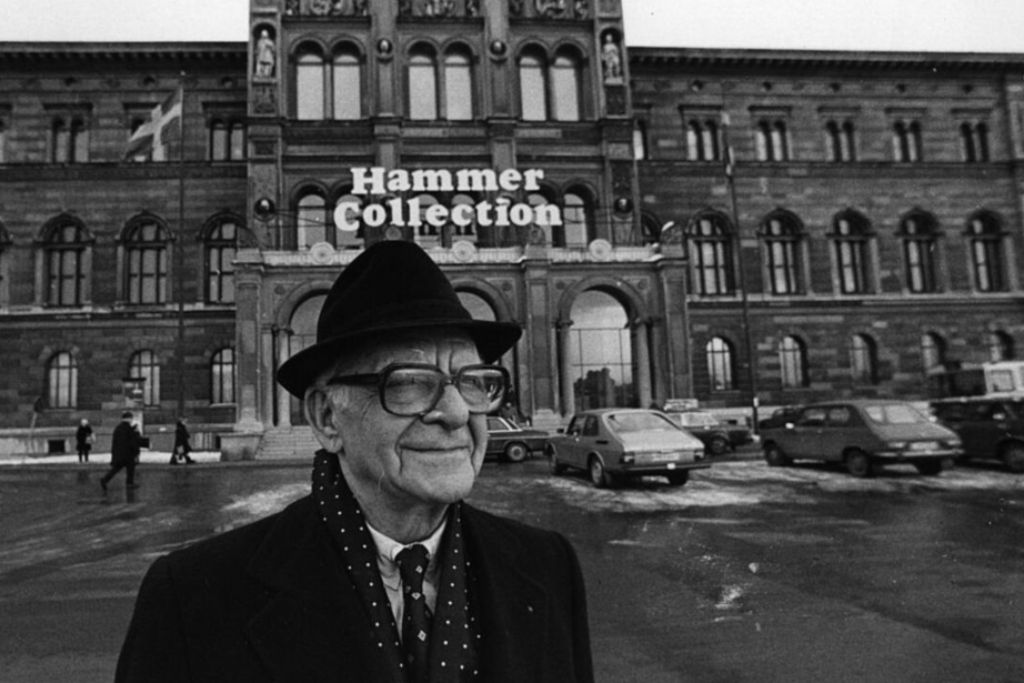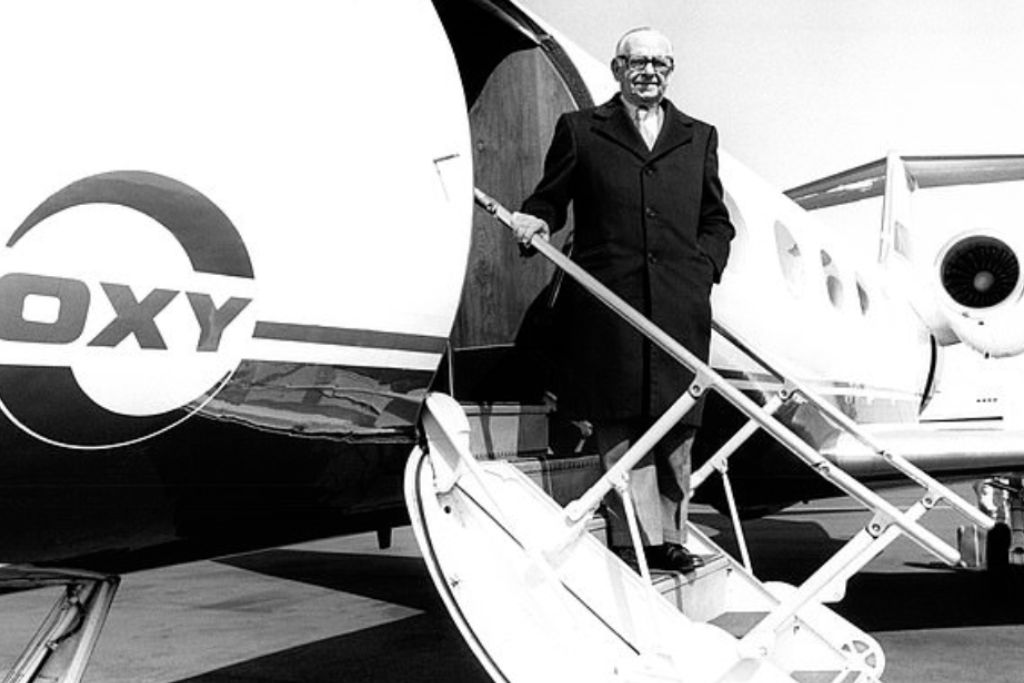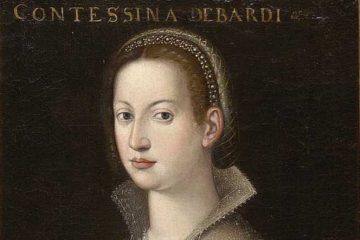
Today, Armand Hammer is famous for having been one of the richest men of his time. Yet despite this, it may surprise you to hear that he was once a communist, with he and his entire family being under FBI surveillance for their entire lives!
As head of Occidental Petroleum, then-one of the world’s largest petroleum miners and refiners, Armand Hammer was able to amass an oil fortune that was only dwarfed by that of J. Paul Getty.
Although his reputation has soured considerably since his death – mostly owing to Occidental’s poor environmental record, and Hammer’s refusal to acknowledge the environmental destruction caused by his company, his life is still a great tale for any wannabe business mogul!
Birth And Early Life
In 1875, Jewish immigrants Julius Hammer and his wife, Rose Lipschitz, left Odessa, in Ukraine (then a part of the Russian Empire) for the United States, in the hopes of starting a new life in New York.
Settling in the borough of The Bronx, in New York, Julius – a licensed doctor – would establish a general medical practice, before acquiring or establishing five nearby drug stores, a company he called Allied Drug, which allowed the family to live relatively comfortably.
Despite his business successes, Julius and his wife were devout communists. Using his money, Julius would help found the Socialist Labor Party of America (the precursor to the Communist Party USA), with the help of several other communists and trade unionists in The Bronx.
It was into this household that Armand Hammer was born on May 21 1898.
According to some sources, Armand Hammer claimed that his father named him after his favourite character in Alexander Dumas’s La Dame aux Camélia, Armand Duval.
However, later sources would claim that his name was an allusion to the “arm and hammer” symbol that served as the logo of the Socialist Labor Party of America. This latter interpretation seems to be the one preferred by Armand himself.
In 1916, at the height of WWI, Armand would graduate high school. From here, he attend the prestigious Columbia University, graduating in 1919, before returning to the university the same year, to study medicine, with the intention of becoming a doctor and working for his father’s Allied Drug company.
Graduating in 1921, Armand would briefly have an internship at Bellevue Hospital in New York City.
Although his medical career was short-lived, Armand loved nothing more than being called “Dr. Hammer” with his nickname as a businessman being either “Dr. Hammer” or “The Doctor” – both owing to his physical appearance and his short-lived medical career.
In 1927, Armand would marry Russian actress/singer Olga Vadimovna Von Root, a woman three years his junior. Despite Armand’s communist ideologies, his new wife was the daughter of a tsarist general during the Russian civil war.
His Father Goes to Prison
As one of the highest-profile communists in New York, federal authorities soon placed Armand’s father, Julius, under constant surveillance.
Learning of Armand’s communist views, federal authorities would also place Armand under surveillance too, something they would continue for the rest of Armand’s life.
On July 5 1919 surveilling Armand’s father, federal authorities would watch as Marie Oganseoff, the 33 year-old wife of a former tsarist diplomat, entered Julius’s medical practice.
Although her husband was wealthy, Oganseoff had a history of poor health, coming to the belief that she could never give birth to a healthy child.
Prior to July 1919, Oganseoff had become pregnant several times, having had several abortions at different New York medical clinics. In July 1919, she turned to Julius Hammer to get rid of the child (as abortion was still illegal at the time).
Although technically illegal, Julius performed the procedure successfully. However, the procedure took during the Spanish Flu pandemic, with Oganseoff soon catching the disease, and dying six days after the procedure.
Using this, federal authorities would arrest Julius and charge him with murder.
During the subsequent trial, Julius would try to explain that the abortion was a necessary medical procedure that had nothing to do with Oganseoff’s death. Prosecutors, however, would argue that Julius deliberately let her “die like a dog” as they put it.
Not surprisingly, the jury would find Julius guilty, before the judge sentenced him to three and a half years in New York’s Sing Sing prison.
Despite blame being officially placed on Julius, there is actually a sizeable amount of evidence to suggest that Armand Hammer (who was then a medical student at Columbia) performed the surgery, not his father.
Historians claim that Julius would take the blame to protect his son (as well as use his experience as a doctor to try to convince the jury that it was a necessary medical procedure, performed by a professional doctor, not a medical student).
Travels to The USSR
With his father in prison, and his father’s closest friends/business partners having left for the USSR, a 22 year-old Armand had no choice but to take over his father’s Allied Drug company, with the help of his brothers.
As with many people whose father was incarcerated, Armand would regularly visit his father in prison. On one of these visits, Julius would instruct his son to go to Russia to collect a $150,000 debt Russia had incurred during the Allied Intervention in the Russian Civil War.
Needing a passport to travel out of the country, Armand Hammer would apply for a passport. On his application, Armand would list his reason for travel as “commercial business and pleasure” and claiming that he only planned to visit Western Europe.
Still having the young communist under surveillance, FBI director J. Edgar Hoover knew this latter statement to be false, however, allowed the young communist to receive his passport anyway, believing that this would knock some sense into him about the realities of communism.
Leaving New York, a young Armand would soon arrive in Moscow, immediately meeting with Boris Reinstein, then-head of the Supreme Economic Council, to discuss the repayment of this debt, with the pair soon coming to an agreement.
Although initially intending to remain in the USSR for a few months at most, Armand would stay in the Soviet Union until late 1930, with him actually seeing his business career begin in the communist country.
Early Business Career

Just prior to leaving for the USSR, Armand and his brothers would make a fortune reselling military-grade medical equipment they’d bought at depressed prices after the end of WWI.
In 1919, at the height of prohibition, Armand Hammer would also make a killing by manufacturing and selling ginger root extract (which legally contained high levels of alcohol), with the company seeing $1 million in its first year of business.
Upon traveling to the USSR, Armand would take $60,000 worth of medical equipment with him earmarked for the Soviets, who were experiencing a typhus epidemic. Armand’s medical equipment would save millions of Soviet lives.
This act caught the attention of Soviet leader, Vladimir Lenin, who invited the young American to meet with him. Here, the pair would strike a deal for Soviet fur and caviar to be exported via Hammer to the United States.
According to Armand Hammer, it was here where Lenin said: ”We do not need doctors, we need businessmen… communism is not working and we must change to a New Economic Policy.”
Using Armand’s western contacts, Lenin would also give concessions to Hammer to produce pens, pencils and other stationary equipment, with these concessions being the first foreign ones in Soviet history, and making Hammer $5 million gold rubles in the process!
Acquiring Occidental Petroleum
Upon returning to the US in late 1930, Hammer would return to Allied Drug, whilst beginning to invest in a number of businesses. It was here, where Hammer would buy a cattle farming business and a whiskey distillery and later a phosphorus mining company.
After having divorced Olga in 1943, Hammer married again, marrying the socially affluent, Angela Carey Zevely in 1954, however, the marriage was short-lived, lasting less than a year before Hammer divorced her.
Following his divorce with Angela, Hammer would meet and fall in love with a wealthy widow, by the name of Frances Barrett (née Tolson), with the pair later getting married in 1956.
By 1957, Armand Hammer was a self-made multimillionaire, and was married to a woman who was also independently wealthy. Selling off his cattle farming and whiskey distillery businesses, the couple would merge their money to buy a defunct oil company.
This company was Occidental Petroleum.
Despite being almost 60, and having no prior experience in the oil business, Hammer was convinced that he and his wife could acquire a controlling stake in the company (whose stock was then trading at 18 cents a share) and make it great.
Upon he and his wife acquiring a majority stake in the company, Armand would use this to force out the old CEO and president, and instate himself in these roles.
Expanding Occidental
Whilst having no prior knowledge of the oil industry, Armand Hammer was a voracious reader, with him soon knowing more about the oil industry than his competitors did!
Using this knowledge and his money, Armand Hammer would finance the exploration of new oil and natural gas deposits, with the company discovering the huge Lathrop Gas Field in California in 1961.
From here, Hammer’s international business and political connections would allow him to expand Occidental Petroleum into Peru, Venezuela, Trinidad, Bolivia and the UK (even though the latter refused to grant him entry into the country’s due to his chumminess with the Soviets).
After oil was discovered in Libya in 1959, Hammer was one of the first oil magnates to go to the country, establishing several oil fields in Libya, which would be nationalized by Muammar Gaddafi after the 1969 revolution.
Despite this set back, Hammer had still been paid for what the Libyan government had taken from Occidental, with the company using it to acquire New York-based chemical manufacturing company, Hooker Chemical Company.
Through Hooker Chemical, Hammer was able to invest heavily in R&D, which resulting in the discovery of oil shale in 1972, which made the company billions of dollars (and continues to do so today!)
Thanks to this money, Hammer would strike a deal with Venezuelan state-owned company Ecopetrol, to explore for oil in the country, resulting in the discovery of the Caño Limón oil field, which has netted both companies even more money.
1988 would be both a good and a bad year for Hammer. In April, Occidental acquired Cain Chemical in a deal valued at $2 billion, whilst July saw the inferno at the company’s Piper Alpha platform in Scotland, which remains the world’s deadliest offshore oil rig disaster yet!
As you can imagine, public opinion, especially in the UK, began to sour against the 90 year-old oil magnate.
Going Beyond Oil
Starting in the early 1970’s, Hammer would begin to negotiate with Soviet officials to buy Impressionist and Post-Impressionist paintings and other pieces of art, formerly owned by the Russian Imperial family, for his personal collection.
Prior to this, Hammer had established the Hammer Gallery, before acquiring the Knoedler Gallery in New York for $2.5 million, in 1971. A few months before his death, Armand would establish the Hammer Gallery in 1990, which soon became affiliated with UCLA.
In 1981, Armand would fly to the Soviet Union with a young American horse breeder, called David Murdoch. Here, Armand acted as an intermediary, facilitating a deal between the Soviet Union and Murdoch, for the latter to buy a rare breed of Arabian horse.
During the flight, however, Armand would become quite interested in David Murdoch’s other businesses, namely his beef-packing company, Iowa Beef. By the time the pair returned to America, Armand had bought a minority stake in Murdoch’s company through Occidental.
By 1987, Armand Hammer and Occidental had increase their stake to become the company’s largest shareholder, before divesting themselves in 1991.
For much of Armand’s business career, people had asked him whether he owned, or had any connection to the Arm & Hammer brand of baking soda (which he didn’t, as the company had been founded 31 years before he was born).
So sick of saying “no” Armand tried to buy the owner of Arm & Hammer, Church & Dwight, on several occasions, but the owners refused to sell. In 1986, however, Armand was successful, acquiring enough stock to join the company’s board of directors.
Over the course of the late 1980’s, Armand would continue to expand his holdings in the company considerably.
Death And Legacy
In 1988, Armand Hammer would be diagnosed with bone marrow cancer. Using his immense fortune, Hammer would raise $500 million to finance cancer research programs, in the hopes of discovering the cure for his particular kind of cancer.
To promote his efforts, Armand would appear in several TV shows (namely The Crosby Show) to tell people that a cure for cancer was nearly here. Alas, researchers would not find the cure for cancer, with Armand dying from cancer in December 1990, aged 92.
As a part of his will, Armand asked for a tomb to be built for he and his family to be built at the Westwood Village Memorial Park Cemetery, which was overlooked by the Occidental Tower in Los Angeles.
Shortly after his death, Forbes would estimate his net worth to have been at around $800 million on the day of his death. Adjusted for inflation, Armand Hammer’s net worth would be around $16 billion in today’s money!
Armand would be survived by his only son, Julian (named in honor of his father, Julius) who he’d had with his first wife. Sadly, Julian disliked his father’s business, and refused to be a part of it, not matter how hard Armand pushed it.
However, Julian wouldn’t be the only one of Armand’s descendants to outlive him. Julian’s son, Michael, would also outlive his grandfather, taking over the oil business his grandfather had made famous.
Michael would also have two children of his own that would outlive their great-grandfather. The eldest is actor Armie Hammer of The Man from U.N.C.L.E fame, and the second is businessman Viktor Hammer.
Despite his advanced age, Armand remained active in Occidental’s management until the day he died. In turn, this has inspired many other successful businessmen: Phil Town; Warren Buffett and Charlie Munger (to name a few) to do the same!
Hilariously, Marlon Brando’s character of Adam Steiffel, in The Formula, would be largely based on Hammer. Hearing that Brando had been paid $250,000 per day for the film, Hammer allegedly quipped that he’d have “played the role personally for that kind of money!”
Political Involvement
Although initially a communist like his father, Armand’s early business successes would soon see him break away from the rest of the communist party. Yet, this move would not end Armand’s involvement in politics…
Instead, Armand Hammer simply joined another party.
Whilst never officially a member of the party, Armand would be a sizeable donor to the party, donating $54,000 to Richard Nixon’s political campaign, even going as far to break campaign finance laws to ensure Nixon became president.
Thanks to his prior medical training and connections to the Republican Party, Republican President Ronald Reagan was able to appoint Armand to serve on the President’s Cancer Panel in 1981, before eventually serving as the panel’s chairman from 1984 until 1989.
Yet, it wasn’t just the Republicans that Armand liked. For years, Armand would also maintain a strong personal and financial friendship with the Democrats too, even becoming a registered member of the party too!
Among Hammer’s closest friends was actually Democrat Al Gore Sr. (the father of the future vice-president), with the pair meeting whilst Gore was still representing Tennessee in the US Senate.
Following Gore’s failed re-election in 1970, Armand Hammer would soon employ Gore as Occidental’s legal counsel. Following this, Hammer would make Gore the vice-president of Island Creek Coal co., an Occidental subsidiary in Kentucky.
Hammer would also be quite fond of Gore’s son, Al Gore Jr. (the future vice-president), with Hammer encouraging Gore Jr., that if he wanted to, Hammer would help him become president (although Hammer’s death in 1990 effectively put an end to this!)
Rather ironic, given the fact that Gore Jr. is well-known for his environmentalist and anti-non-renewable energy stances today…
Owing to his strong connections to both countries, Armand would serve as an unofficial envoy between both nations, being the go-between for seven presidents (Kennedy through Bush Sr.) and five Soviet premiers (Khrushchev through Gorbachev).
How Can I Replicate What Armand Hammer Did?

Reading about the incredible business career (and life!) of Armand Hammer, you may be wondering how you could replicate what he did, and potentially become the world’s next major energy tycoon.
Usually, this is where I tell you that you can’t 100% replicate what Armand Hammer did, before explaining how you could follow his example to become (somewhat) like him.
In the case of Hammer, however, you can’t really replicate what he did.
Whether we want to admit it or not, non-renewable energy sources like oil are slowly becoming a thing of the past. Not only are we running out of them, but we’re also seeing public opinion sour greatly against non-renewable energy companies, due to their impact on the environment.
Although non-renewable energy powered our grandparents’ generation, renewable energy like wind and solar will power ours, we just need someone who can consolidate it like Hammer did with petroleum.
To date, there doesn’t appear to be anyone whose managing to consolidate most of the world’s solar and wind farms (or other types of renewable energy) into one massive energy company – perhaps you can!
I’m not going to lie to you, doing what Hammer did will not be easy. Not only is it going to take a large amount of money, but it will also take a huge amount of work too, with Armand Hammer even acknowledging this when he said:
When I work fourteen hours a day, seven days a week, I get lucky.
What Can we Learn From Armand Hammer?
Although 100% replicating what Armand Hammer did would be both incredibly difficult, and perhaps futile, his life can certainly teach you a lot. And it’s not just about business either, but also about life in general…
Make Powerful Friends
Despite many people at the time believing that Hammer was a Soviet spy (whether knowingly or unknowingly), Armand had made so many friendships with so many powerful people, that he was essentially untouchable.
According to Armand Hammer, he’d known every president from Hoover until Bush Sr., serving as a citizen diplomat for Kennedy until Bush, maintaining apartments in both Moscow and Los Angeles, with no one objecting to either.
Over the course of his business career, Hammer would come to form a special kind of friendship with the most unlikely people. Often, Hammer’s closest friends were people who’d usually be antagonistic towards American, and American entrepreneurs even more so.
It was through these friendships, that Armand Hammer was able to cool tensions between East and West during some of the most turbulent times in the Cold War, whilst also striking multibillion dollar business contracts in the process!
Don’t Forget to Diversify
Although the bulk of Armand’s $800 million fortune would be derived from his holdings in Occidental Petroleum (and thus the other oil, gas and coal companies it owned), Armand would not forget to diversify beyond energy.
To begin with, Armand would buy beef-packing companies, like Iowa Beef, and lines of baking soda, like Arm & Hammer.
Over time, however, Armand Hammer would expand into golf courses (mostly in California) and the medical field too.
By far the most diversification he did, was to do with his art collection, with it growing to such a point, that Hammer had no other choice than to purchase or establish art galleries and art dealers.
However, Armand also showed how cautious of over diversification, he was, understanding that buying too many businesses in different industries would soon act against his best interests.
Found an Empire
Armand would spend almost his entire life trying to build one of the largest business empires the world has ever seen. Much to even his own surprise, Armand would build one of the largest oil conglomerates the world has ever seen!
Despite his son seemingly wanting nothing to do with the family business, Armand’s grandson, Michael, would follow in his grandfather’s footsteps, controlling the majority of the family’s stake in Occidental.
Seeing that the world was changing, Michael would remove the family’s stake in Occidental, instead reinvesting it in other industries that aren’t seeing the world turn on them, thus ensuring the Hammer family will retain their wealth.
You could make the argument that Armand’s empire is still going today, albeit in a completely fashion, through his great-grandson, Armie Hammer, who, despite making the news for all the wrong reasons in recent years, is still a fairly accomplished actor.
Give Back
As one of the richest businessmen of his time, Armand could’ve quite easily sat in his ivory tower, counting his oil money, not giving a damn about anyone else but himself. Instead, Armand chose to use his money to help everyone.
Even early on in his business career, Armand was motivated by helping the starving Soviet citizens. This would be continued well into Armand’s business career, with him using his money to help all of humanity, not just himself.
Beyond his humanitarian works, Armand’s main area of philanthropy would be the arts, where he’d sponsor the creation of several new pieces of contemporary art for his collection, or buy those from struggling artists.
However, many since have argued that even though his philanthropy helped millions of people on both sides of the Iron Curtain, it doesn’t even begin to make up for the environmental damage his company has done.
Your Parents Don’t Define You
Born into an immigrant family with communist sentiments, it would’ve been easy for Armand Hammer to have followed in his father’s footsteps and joined the Communist Party of the USA, and potentially help launch a communist uprising in the United States.
Indeed, Armand did actually let that happen, with him joining the communist party like his father and helping to expand its relationship with the Soviet Union.
After his father went to prison, however, Armand soon began to break away from the communist party, which, combined with his business successes, soon saw him become the stereotypical “capitalist” and one of the best rags-to-riches stories ever!
Sadly, the FBI wouldn’t agree with this statement, continuously monitoring Armand Hammer and his family until his death in 1990, fearing that Armand may use his influence as a “capitalist” to finance a communist uprising against the US government…
Has the story of Armand Hammer inspired you? Tell me in the comments!
